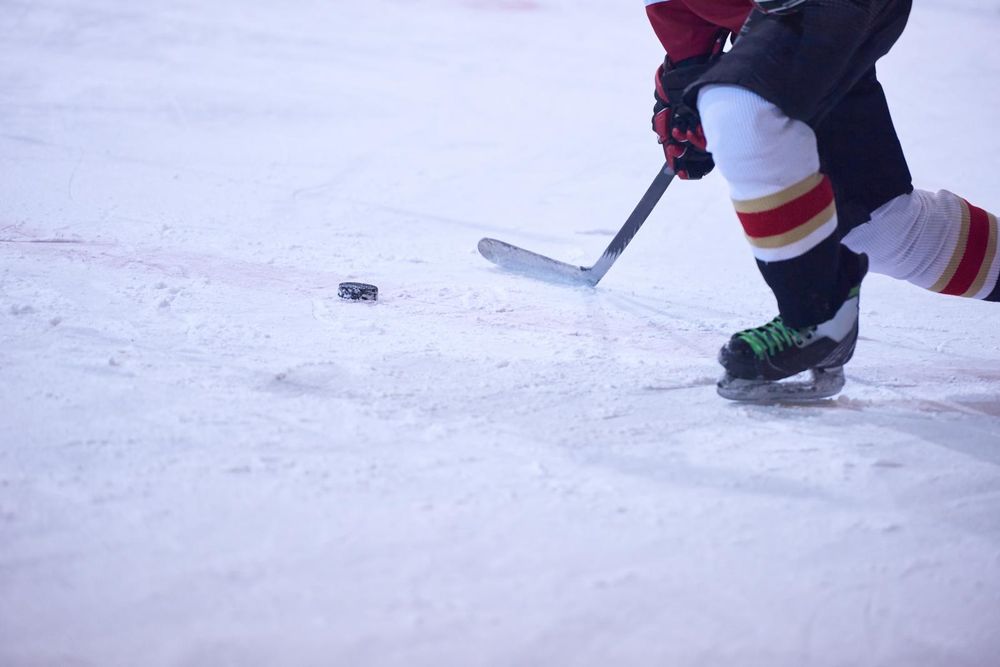In this article, we will delve into the essential techniques and key differences that an inline player should be aware of when transitioning to ice hockey. Moving from inline to ice brings about significant changes, requiring adaptation and learning. With the guidance of expert instruction, inline players can develop their ice skating skills effectively.
The switch from rubber wheels to steel skate-blades introduces a unique feel and challenges to the game. Achieving balance, executing tight turns, and mastering effective stopping techniques on ice demand excellent edgework and dedicated practice.
Furthermore, we will explore the variations in equipment, rules, and gameplay, providing invaluable insights for a smooth transition. Join us as we embark on an exciting journey into the world of ice hockey, uncovering epic tips that will enhance an inline player’s experience in this exhilarating sport.
Skating Skills and Techniques
When transitioning from inline to ice hockey, mastering skating skills and techniques is crucial for success on the ice. Improving balance and mastering tight turns are two key aspects that players must focus on when making this transition.
On inline skates, players have the advantage of rubber wheels that provide stability and strength. However, ice skating with thin steel skate-blades requires a different level of balance and control. To improve balance, players should practice exercises that strengthen their core and lower body muscles.
Mastering tight turns involves using proper edgework and body positioning to navigate sharp corners effectively. Developing these skills will not only enhance a player’s performance on the ice but also provide a solid foundation for future growth and success in ice hockey.
Transitioning Ice Hockey Equipment
Transitioning to ice hockey requires a player to adapt their equipment, including the use of different ice hockey gear. When making the switch, it’s important to choose the right gear and find the right fit to ensure comfort and safety on the ice.
Here are five key considerations:
- Skates: Invest in a pair of ice hockey skates that provide proper ankle support and fit snugly. This will enhance your skating performance and prevent injuries.
- Helmet: Protect your head with a certified ice hockey helmet that fits securely and comfortably. It’s crucial to prioritize safety on the ice.
- Shoulder Pads: Opt for shoulder pads that offer adequate protection while allowing for ease of movement. They should fit snugly and cover your shoulders and collarbone.
- Gloves: Find gloves that provide sufficient padding, flexibility, and grip. They should allow you to handle the stick and maintain control during gameplay.
- Pants: Ice hockey pants are bulkier than inline hockey pants and should fit loosely to allow for movement. Ensure they provide proper protection for your hips and thighs.
Understanding Ice Hockey Rules
To fully grasp the dynamics of ice hockey, it is essential for players transitioning from inline hockey to have a comprehensive understanding of the intricate rules governing the game.
Two key rules that players must be familiar with are offside and icing. Offside occurs when an attacking player enters the offensive zone before the puck, resulting in a stoppage of play. This rule promotes fair play and prevents players from gaining an unfair advantage.
Icing, on the other hand, is when a team shoots the puck from behind the center red line and it crosses the opposing team’s goal line untouched. This results in a stoppage of play and a faceoff in the defending team’s zone.
Understanding these rules is crucial for players to effectively navigate the ice hockey game and contribute to their team’s success.
Adjusting to the Speed of the Game
Ice hockey players transitioning from inline should be prepared for the increased speed of the game. The faster pace of ice hockey requires players to adapt their skills and improve their agility. Here are five tips to help players adjust to the speed of the game:
- Focus on skating technique: Mastering efficient strides and powerful crossovers will allow players to keep up with the pace of the game.
- Enhance speed and quickness: Incorporate off-ice exercises and drills that target speed and agility to increase on-ice performance.
- Read the game: Anticipate plays and make quick decisions by studying the game and understanding different strategies and systems.
- Improve reaction time: Practice quick reflexes by participating in drills that simulate game-like situations and require rapid responses.
- Enhance conditioning: Ice hockey demands a high level of cardiovascular endurance, so players should focus on improving their stamina through proper training and conditioning programs.
Adapting to the Differences in the Puck
Players transitioning from inline hockey to ice hockey must quickly adapt to the differences in the puck, which can be challenging due to the weight and characteristics of the vulcanized rubber puck.
Unlike the plastic puck used in inline hockey, the ice hockey puck is heavier, making it more difficult to handle and control. To overcome this, players need to develop proper handling techniques and improve their puck control skills.
This involves adjusting their stickhandling and shooting techniques to account for the puck’s weight and the way it interacts with the ice. It also requires learning how to read the puck’s movements and anticipate its bounces on the ice.
Frequently Asked Questions
What Are Some Common Injuries That Can Occur When Transitioning From Inline Hockey to Ice Hockey?
Common injuries when transitioning from inline hockey to ice hockey include sprained ankles, knee injuries, and concussions. Off-ice training exercises can help prevent these injuries by improving strength, balance, and agility. It’s important to gradually adjust to the new demands of ice hockey to avoid injury.
Are There Any Specific Off-Ice Training Exercises That Can Help Improve Ice Skating Skills?
Off-ice conditioning and agility training can significantly improve ice skating skills. Exercises such as plyometrics, balance drills, and lateral movements can enhance stability, quickness, and agility, ultimately leading to better performance on the ice.
How Does the Gameplay Strategy Differ Between Inline Hockey and Ice Hockey?
The gameplay strategy in inline hockey differs from ice hockey due to the larger ice surface and differences in equipment. Adjusting to the ice surface requires players to focus on positioning, speed, and teamwork to effectively navigate and control the game.
Are There Any Specific Techniques for Stopping on the Ice That Inline Players Should Be Aware Of?
When transitioning from inline to ice hockey, it is important for players to learn specific stopping techniques on the ice. This will help prevent injuries and allow for more control and agility during gameplay.
Can You Recommend Any Drills or Practice Routines to Help Inline Players Adjust to the Faster Pace of Ice Hockey?
To help inline players adjust to the faster pace of ice hockey, off ice conditioning drills can improve speed and endurance. Additionally, focusing on stickhandling techniques and practicing quick puck movement can enhance their ability to keep up with the game.
Conclusion
In conclusion, making the transition from inline hockey to ice hockey requires dedication and a willingness to adapt.
By developing strong skating skills, understanding the equipment and rules, and adjusting to the speed and nuances of the game, inline players can successfully navigate this exciting new world.
So lace up those skates, embrace the challenge, and get ready to experience the thrill of ice hockey like never before.
It’s time to take your shot and become a big shot in the world of hockey.









